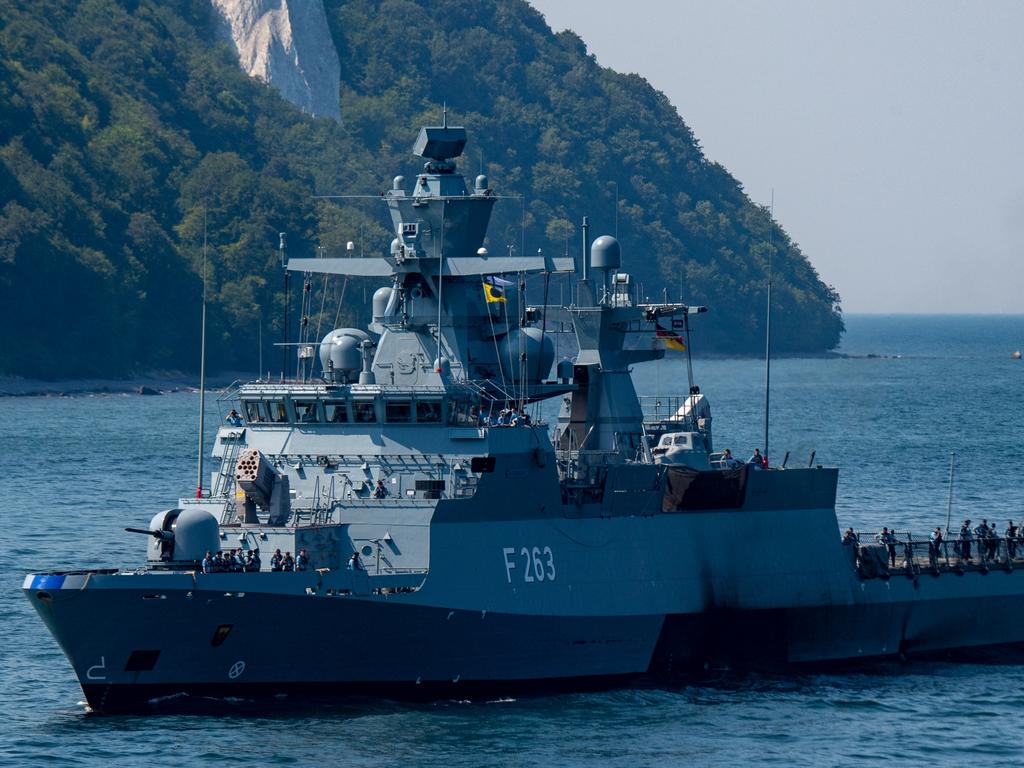ADF plan: hire ferry to deploy infantry
The ADF would need to buy new ships or hire ferries to deploy the army’s proposed infantry fighting vehicles in significant numbers, a new report warns.

The Australian Defence Force would need to buy new ships or hire commercial vessels such as the Spirit of Tasmania ferries to deploy the army’s proposed infantry fighting vehicles in significant numbers, a new report warns as the government stalls on the $27bn purchase.
Australia’s three amphibious landing ships, HMAS Canberra, Adelaide and Choules, can carry a maximum of 20 of the vehicles each, and would face the risk of enemy attack in a conflict scenario, an Australian Strategic Policy report says.
Its author, military historian Albert Palazzo, argues that the planned acquisition of up to 450 infantry fighting vehicles would be a “generational leap” forward for the army in troop protection and lethality.
He says both of the vehicles on offer – the German Lynx or South Korean Redback – are highly capable, offering necessary sensors and communications technologies to operate in a “system-dominated” future war.
The report comes at a tense time for the army as the government’s defence strategic review, led by former defence minister Stephen Smith and former Defence chief Sir Angus Houston, evaluates the proposed acquisition - which was due to be decided in September - against competing capability needs.
Dr Palazzo said any plans to use the vehicles offshore would pose transport problems for the ADF, which “lacks significant sea and air lift with which to deploy the army”.
“The RAN doesn’t have the ability to control the seas against an adversary such as China; nor does the RAAF possess sufficient aircraft to control the air,” he said.
“An adversary would be able to threaten with destruction any overseas movement by the Australian Army, except one protected by a coalition partner or undertaken in the most benign conditions.”
Using all three of the navy’s amphibious ships at once – an unlikely scenario – would allow a maximum lift of 60 vehicles.
“A need for a larger lift requirement can be met in several ways. The most likely is for the ADF to obtain additional capacity from hired commercial vessels,” he says.
A lack of a national fleet of Australian-flagged ships would limit ADF options, Dr Palazzo said, and the most useful would be “two cargo ships that sail between Victoria and Tasmania, as well as the Spirit of Tasmania ferries”.
Creating a national fleet of merchant ships – which the Albanese government is considering – is another option, along with the purchase of a navy fleet of auxiliary cargo ships, “the primary function of which would be to deploy the army and its equipment”.
Australia could also ask for help from the US, “but there’s no guarantee the US will be able to meet such a request because it will naturally meet its own needs first”.
Dr Palazzo warns the ammunition and Israeli-made Spike missiles to be used by the vehicles would also have to be imported, posing potential supply chain problems.
He poses a range of scenarios in which the vehicles could be used, including to protect ground-based anti-ship batteries on remote Pacific Islands to hinder an enemy’s maritime movements. They could also be used to protect the mainland from “raids by small bodies of troops” in a future conflict seeking to “disrupt Australia’s war plans”.







To join the conversation, please log in. Don't have an account? Register
Join the conversation, you are commenting as Logout